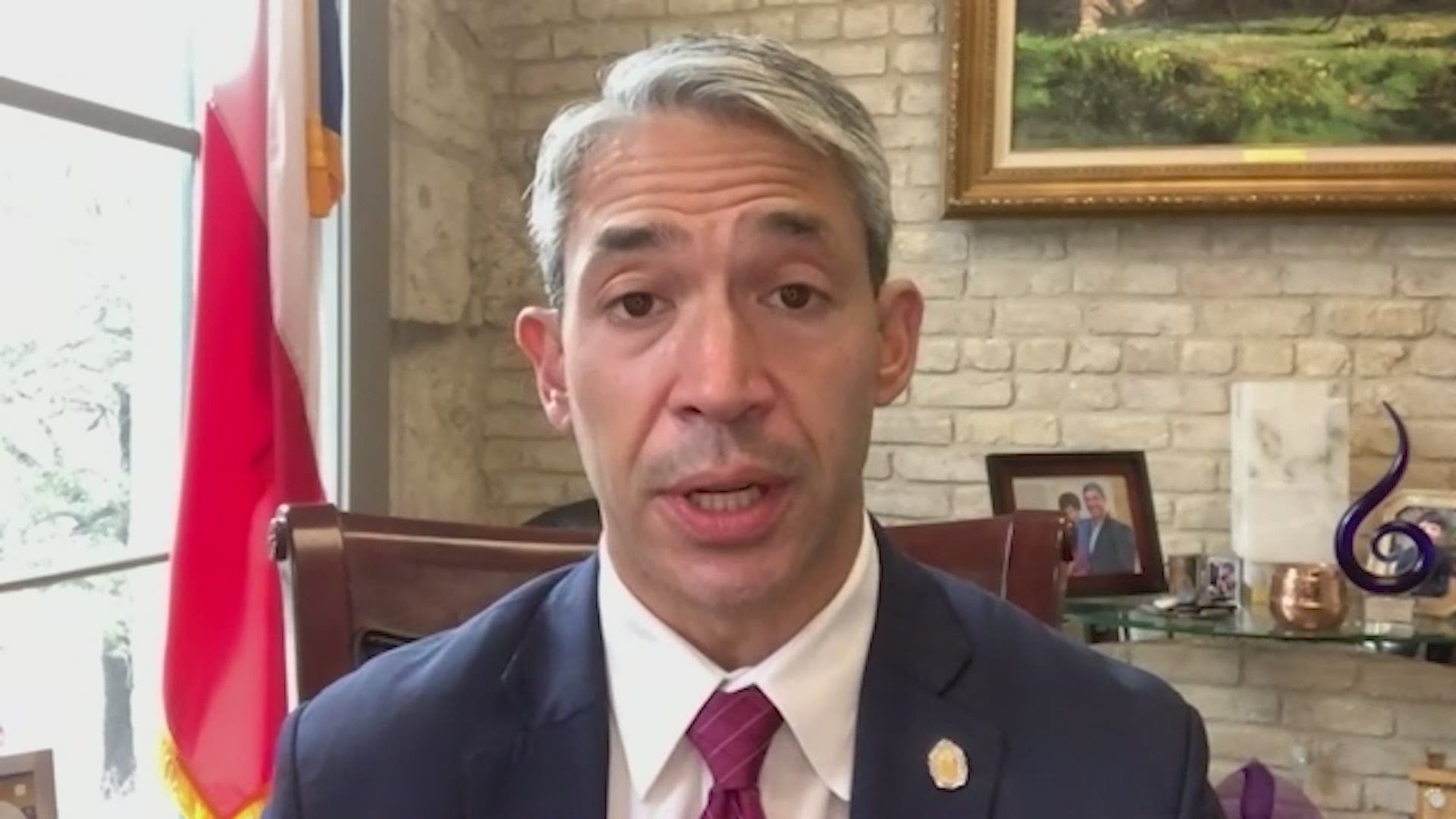SAN ANTONIO — San Antonio started its coronavirus story supporting Americans housed at Joint Base San Antonio-Lackland from Wuhan, China, and the Grand Princess cruise ship.
"Our mission, at that point, was to ensure that the evacuation process was contained with the base," Mayor Ron Nirenberg said.
But the attention of local leaders shifted to San Antonio and Bexar County on March 13, 2020. That's when the group of nearly 400 quarantined at JBSA-Lackland were no longer an anomaly following the COVID-19 diagnosis of a traveler from the east coast outside the military installation's walls.
Nirenberg remembered getting a call from Assistant City Manager Dr. Collen Bridger confirming the worst.
"It was a moment that we had been preparing for, seeing what happened in California and Washington state and elsewhere," Nirenberg said. "We began to realize very early on that it was only a matter of time given the spread in those areas."
He described it as the first shot fired in the war against coronavirus. But it would not become the last.
"It was, certainly, a very real call to arms in a very real way for our entire community."
The mayor said it was the day the coronavirus began its tour as a household name and threat in the Alamo City.
Two days earlier, the World Health Organization declared the COVID-19 outbreak a pandemic.
Texas, Bexar County and city leaders issued public health emergency declarations. But that's where local, state and federal officials ended coordination.
"What we quickly found out was that we were being abandoned in many ways by the federal and state government approach, which was entirely inconsistent across the United States," Nirenberg said.
He said local leaders worked out their strategies. Then, they saw the state government strip away any teeth from mask mandates and occupancy control at businesses.
"They've been headwinds in our fight against this pandemic," Nirenberg said.
COVID-19 cases popped as disbelief in the virus reared its head. Wearing masks became controversial to some. The science surrounding the virus, Nirenberg says, became political.
"We are a city of science, and we are a city of medicine," he said. "We're a military city. And we respect and listen to our leaders in uniform, whether they wear fatigues or white coats."
Nirenberg recalls planning for resiliency and recovery with local leaders. He said they pushed all other priorities to the side to make sure people were fed, housed and had internet connectivity while small businesses received assistance, and workforce support was available.
But the impact of the virus consumed thousands of jobs, shut down businesses and has buried nearly 3,000 people in Bexar County.
"We've had three distinct surges of the infection, right when it first started again in the summer, and then we've had an incredibly deadly surge here in the fall and winter months," he said.
Nirenberg said we have to mourn those we lost and prayed for those who remain.
Vaccinations have answered some prayers and provided glimmers of hope.
"I am hopeful, based on health numbers, that the sun is beginning to rise in San Antonio," he said. "This pandemic will be soon behind us."
He said this dark season reminded him San Antonio's chief strength continues to be compassion.
That, coupled with his wife and son, makes San Antonio a great place to live. And a city even more incredible place for economic comeback, in time.
"We will have scars, but we will heal," he said.

